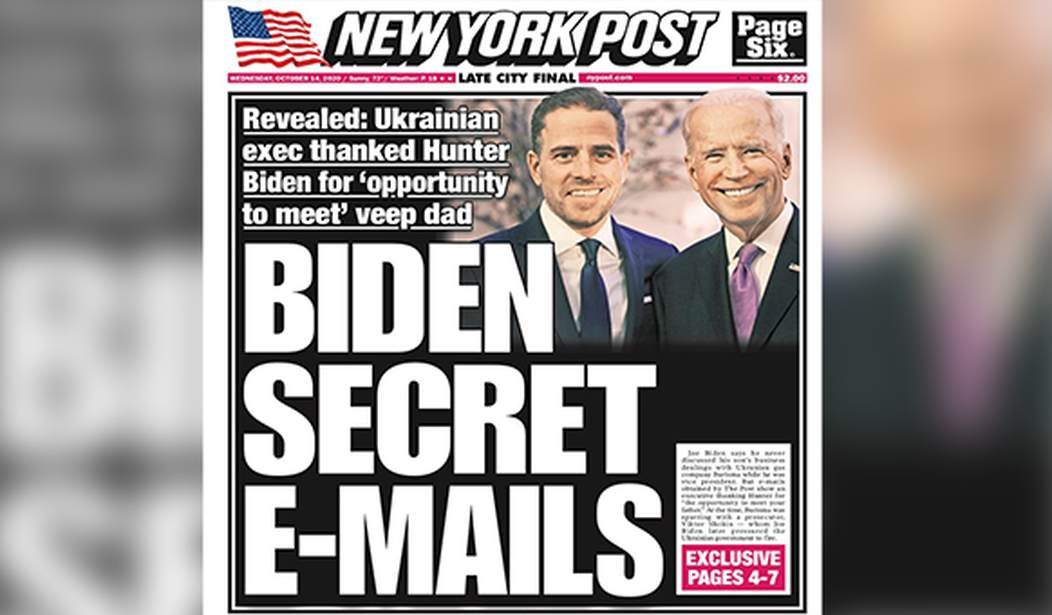What with Twitter CEO Elon Musk handing over the “Twitter Files” to independent journalists on the social media platform over the course of the last several days, we’ve learned more about the machinations that went on behind the scenes as it relates to their deliberate suppression of the New York Post’s blockbuster Hunter Biden laptop story (and their locking of the Post’s Twitter account) in October 2020.
As per the norm, the Usual Suspects in the media and on the left have struggled to cope, with some performing rather strenuous backflips to alternately suggest with straight faces that most of the information posted was already known (false), that it’s no big deal (false), that what Musk is doing is dangerous (false), and/or that Substacker Matt Taibbi is simply a Musk stooge who is in it for the money or whatever (even if so, so what? The documents don’t lie).
But in a rather interesting and somewhat amusing development, two members of the Washington Post “journalism” machine took to the Twitter machine Monday in an attempt to revise their own contributions to the downplaying/suppression effort.
Responding to a tweet from Georgetown University professor Don Moynihan on how Musk allegedly “want[s] media to repeat their claims w/o verification or context,” WaPo columnist Philip Bump – who used to write on the “objective” side of the newspaper, proclaimed that the supposed standard with the Twitter files as far as most in the media were concerned was similar to the one on the Hunter Biden story, namely that most major media outlets weren’t running the story because they allegedly couldn’t verify it.
“This is also a major reason why other outlets didn’t match the NY Post’s original laptop story: they weren’t given access to the laptop data!” Bump tweeted, believing he had a winning argument.
Washington Post “fact checker” Glenn Kessler also weighed in, defending his colleagues at the paper by trying to assure people that the WaPo did in fact “report” on the specifics of the laptop claims … but only much later (well after the election, of course, in 2022 to be exact!) when they say they were able to verify the laptop’s contents.
“Not until mid-2021 did a source provide The Washington Post a copy of the hard drive. Then my colleagues went immediately work on it. We hired experts to assess the veracity and produced articles based on material that could be verified,” Kessler wrote.
Except even a first-year journalism student will tell you that news outlets often do run stories that they haven’t verified independently themselves while including notes in the story crediting the original source and also while also informing readers/viewers that they were working to verify/confirm the information.
This is something that was helpfully pointed out to Bump by conservative commentator/Federalist senior editor David Harsanyi after Bump went the “I’m gonna be a smart-a**”” route, well, by showing his.
“You didn’t know that other outlets won’t run a report on a Post scoop without confirming it themselves?” Bump said to Harsanyi, apparently thinking it made him sound like the smartest guy in the room. “You seem surprisingly underinformed about how actual journalism works, which I suppose isn’t really a surprise.”
Harsanyi did not let the laughable lecture on journalism slide, however.
“No, I didn’t, because it’s complete nonsense. Do you not know that media outlets run scoops from other organizations all the time – they simply credit the other outlet. Would you like a few dozen examples from your own paper?” Harsanyi responded.
Let’s also remember something else important here. Kessler, Bump and others are all trying to cover themselves in glory in stating they refused to run with the details of the story unless/until they could verify it themselves, and yet the Washington Post, CNN, New York Times, and all the rest gleefully ran with the Russia collusion nonsense for four years straight and never once was any of it verified to be anything other than deliberately manufactured (by Democrats) nonsense.
“Phil, if you did not report it because you had no access then why did you push the Russian disinformation angle on the story, when there was ZERO evidence of that? You had no access to proof that does not exist,” my RS colleague Brad Slager observed.
The receipts:
Yet had no prob reporting the story as “Russian disinformation” despite no data to back it up whatsoever 🤔 pic.twitter.com/O66PJZO5bl
— Matt Orfalea (@0rf) December 5, 2022
There’s a reason trust in the media is at an all-time low, and we have pseudo-“journalists” like Kessler and Bump and their ongoing efforts at trying to tell you what to think rather than allowing you to draw your own conclusions on story to thank for it.
Related –>> Finally: The WaPo Discovers the Dangerous Link Between Elon Musk and Donald Trump














Join the conversation as a VIP Member